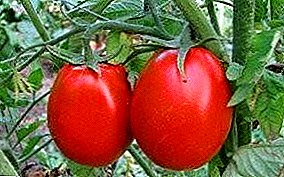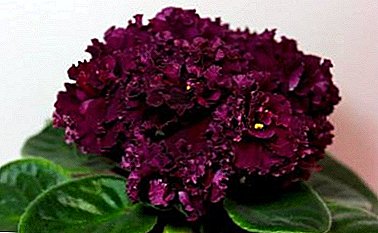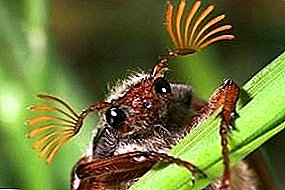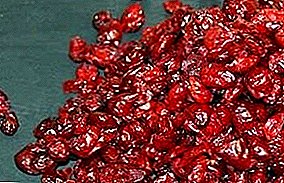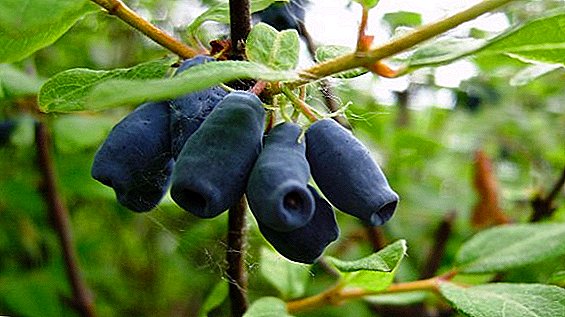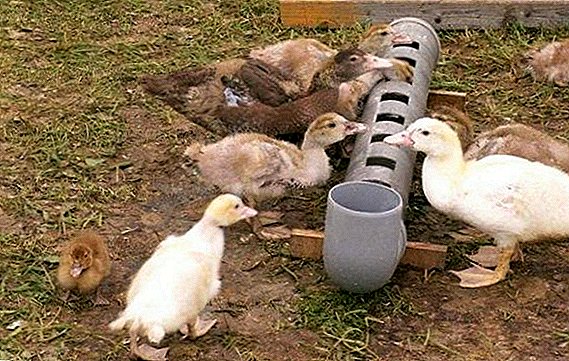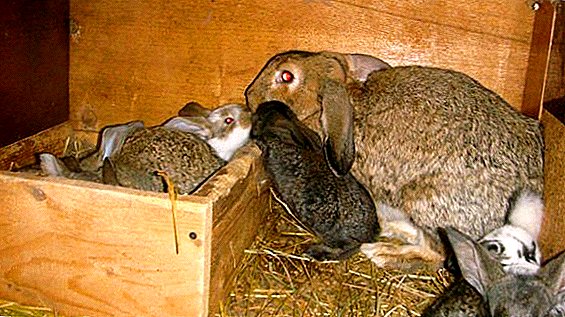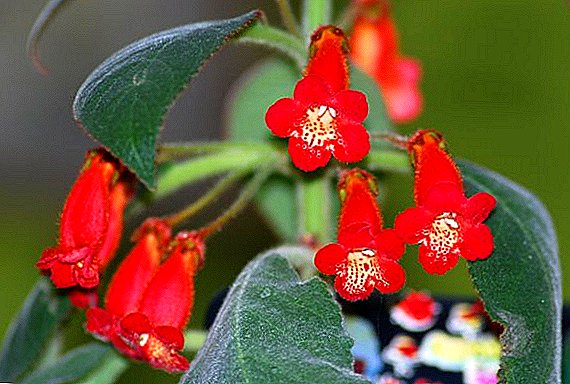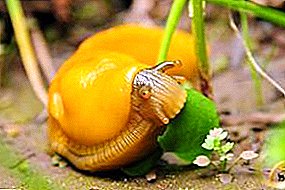
Slugs are a huge problem for many crops, especially vegetables, fruits and grains. Gastropods have an extensive dietwhich depends on the particular type of slug and habitat.
Each year, farmers face the challenge of protecting grapes, potatoes, citrus fruits, legumes, various berries, tomatoes, cucumbers, etc. from these pests.
Slugs feed on fresh crops, grain, foliage, stems, and ripe fruits with tubers. A special delicacy for them is the sweet berries. For more information on how to deal with slugs on vegetables and berries, read here.
general information

Eating cultures - this is not the only threatcoming from slugs.
Slimey pests often regale on various mushrooms, subsequently suffering fungal diseases in the gardens and in the fields of farmers.
Then you have to look for means of struggle not only against the slugs themselves, but also consequences of their stay in the form of potato blight, downy mildew or cabbage blotch.
The question arises: "How to treat the plants from slugs and kill them?", "How to poison slugs in the garden?".
What to poison?
When prevention is like draining sites, land processing with lime or ash is too late; it is time to look for serious measures to combat slugs.
To most of these drugs slugs are indifferent. The poison from slugs must be chosen with the utmost care. Most often it is a powerful chemistry from slugs, as it is the most effective tool. Are available specially designed molluscicides or limacids, i.e. pesticides aimed at the destruction of slugs.
Among the permitted to use are listed such drugs as a domestic "Thunderstorm" or "Slizeed". Chemicals can be based on metaldehyde, dichlorosalicylanilide, copper or copper sulfate, mercury compounds, tin or lead, bleach, etc.
They all differ in spectrum of action., specific type of shellfish, release form, hazard class, dosages and other characteristics.
Effective means
To surely scare off and kill garden pests, you can use folk remedies - timely clean the crop of weeds, sprinkle with lime, potassium salt, ash, superphosphate or bitter pepper.
Farmers often set up traps or obstacles by the type of ditches or sweating rooms, sprinkle sharp shells from eggs and nuts in the way of seedlings. Mechanical methods of struggle are always relevant. However, when the leaves begin to curl, manual collection of snails and slugs becomes very laborious.
The most commonly used drugs for the fight against snails or slugs are Thunderstorm, Meta, Metaldehyde and Ulicid. They are produced in the form of crystalline substances, granules with the addition of bran to attract pests that are soluble in water or other powder liquids.
Depending on the type of poison, they are used against aquatic mollusks, distributing near water sources or directly in the water bodies themselves, and also distributed on the surface of the soil - against land slugs.
Similar to "Ulitsida," there are eco-friendly productsbased on iron phosphate. Among such the most common "Escar-Go", "Sluggo" and "SlugMagic". Chemistry against slugs should be used with caution.
No matter what the drug from the slugs is used by the grower, he must remember that he must immediately stop the treatment of the soil and plants with poison at least 2-3 weeks before the crop ripens, so that berries, fruits or vegetables do not become poisonous to humans.
Preparations
"Thunderstorm" ("Meta")

Thunderstorm from slugs was originally produced in Switzerland under the name "Meta", and for about a century it has been considered one of the most productive and safe means to destroy garden slugs.
- What is produced (release form)? It is packed up in the form of blue granules. One pack contains 15 g or 60 g of the drug.
- Chemical composition. The basic substance "Thunderstorms" - metaldehyde and other auxiliary additives.
- The mode of action of the drug. Since it is an intestinal and contact drug, it has its effect upon direct contact with the body of the slug.
Granules quickly absorb moisture and literally drain pests, depriving them of protective mucus and the ability to move easily. Also slugs willingly eat pellets and die from poisoning after 2 hours.
- The duration of the drug. 2 to 3 weeks. Shelf life 24 days.
- When to apply? The effectiveness of the drug is proved even after heavy rains. Thunderstorm can be used in dry, windless weather, and in the rainy season, when the slug is attracted to a moist environment. Pellets are scattered on the land plot with the first sprouted stems and open leaves.
- Dosage. The standard consumption rate is 30 g of the drug per 10 square meters. m. territory or 15 g per 5 square meters. m. 2-3 processing per season is enough.
- Mode of application. The drug is optimal for the protection of grapes, berries, as well as citrus, vegetable, fruit, and flower crops.
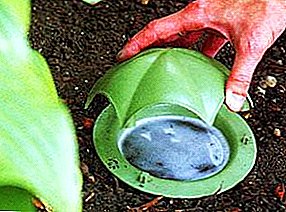 Granules of the substance are scattered under the plants in places where slugs accumulate: between the rows and on the paths.
Granules of the substance are scattered under the plants in places where slugs accumulate: between the rows and on the paths.You should avoid getting pellets in the leaves of cabbage or lettuce, so that after the poison was not in food. Pellets are destroyed by incineration.
- Toxicity. Due to the content in the composition of the granules of some harmful additives, "Thunderstorm" kills slugs, but can attract other pests and scare away birds that would help fight them.
It is undesirable to use the "Thunderstorm" in the premises for storing crops, such as cellars with potato tubers and other vegetables.
The drug is practically harmless to earthworms., bees, fish, algae and most plants.
Hazard class for humans - 3.
When working with a moderately hazardous substance need to protect eyes and airways with glasses, respirator or gauze bandage.
The drug is extremely poisonous as for adults., and for children and pets, if ingested with food or eyes. Any fruits and vegetables after picking rinse thoroughlyif "Thunderstorm" was used nearby.
"Metaldehyde"

One of the most famous and inexpensive drugs used in the fight against slugs and snails.
The most common products are the production of "Lonza" and "August", "Green Pharmacy Gardener".
- What is produced (release form)? It is packaged with small blue granules.
- Chemical composition. The main substance in the composition is toxic metaldehyde (acetaldehyde tetramer). Metaldehyde from Lonza uses bitter additives that scare dogs away.
- The mode of action of the drug. Attracts pests on the same principle as regular beer or fermented fruit.
- The duration of the drug. From 14 to 21 days. At the end of the shelf life is completely decomposed in the ground.
- When to apply? Manufacturers claim that the effectiveness of the drug is maintained even after frequent rains, but the experience of gardeners shows that the granules dissolve quickly in water (2-3 precipitations are sufficient).
It has a devastating drying effect on slugs by direct contact. When ingested destroys the digestive system.
Spread the drug should be in warm and dry weather, with the first appearance of slugsin the midst of spring. Does not require special preparation, is available in finished granules. The consumption of the substance is 15 g per 5 sq.m.
- Mode of application.Crumbled in the necessary places under the leaves of plants. For greater savings, you can place the granules in the aisle.
- Toxicity. 3rd class of danger to humans. The drug is dangerous for pets (especially dogs), adults and children. Not too poisonous for fish, microorganisms and worms.
- What is produced (release form)? Available in packs of 20 g (70 pieces) and 50 g (50 pieces), contains small bait granules, painted in blue.
- Chemical composition. The key substance is iron phosphate. Among other components there is a cereal mixture, wood ash, black pepper, hops, mustard, sugar, salt, kaolin.
- The mode of action of the drug. Dehydrates the bodies of slugs after direct contact, after which they die under a layer of soil.
- The duration of the drug. After the slugs have consumed the pellets, a week has to go before they die.
- Compatibility with other drugs. Due to its ecological composition it can be easily combined with other types of substances against mollusks, including tobacco dust.
- When to apply? The drug should be used at the first appearance of slugs on the beds. Granules are resistant to erosion, so the "Ulitsid" can be applied even after it has rained.
- Consumption rate: 3-5 grams per 1 square. m. plot. One treatment per season is enough.
- Mode of application. The granules are scattered in the indicated doses under the bushes of plants or in the paths and between the rows.
- Toxicity. The poison is absolutely safe for bees, earthworms, garden and ornamental plants. Due to the natural composition, the drug is not attractive to animals and birds, which excludes their poisoning.
Experts do not advise to scatter "Metaldehyde" next to the fruiting plants. Even after thorough washing of vegetables, fruits and berries, where the drug was scattered nearby, there is a minimal risk that some of the poison remained.
"Ulitsyd"

An effective and natural remedy used in the fight against slugs and snails, which kills pests in an enteric way. Available in Ukraine.
After the expiration date means breaks down in the soil into natural elements - iron and phosphorus.
Conclusion
Regardless of the choice, try to give preference to drugs with low dosage toxic substance. The choice of farmers are presented as chemical preparations, and natural.
First known for their high performance., but with a sufficient level of danger to humans, animals or edible plants. The second most secure.
Try to resort to potent chemical poisons, to kill slugs and snailsonly if traditional methods of struggle no longer help. How to deal with slugs in the basement, read here.
Useful video!


 Granules of the substance are scattered under the plants in places where slugs accumulate: between the rows and on the paths.
Granules of the substance are scattered under the plants in places where slugs accumulate: between the rows and on the paths.
